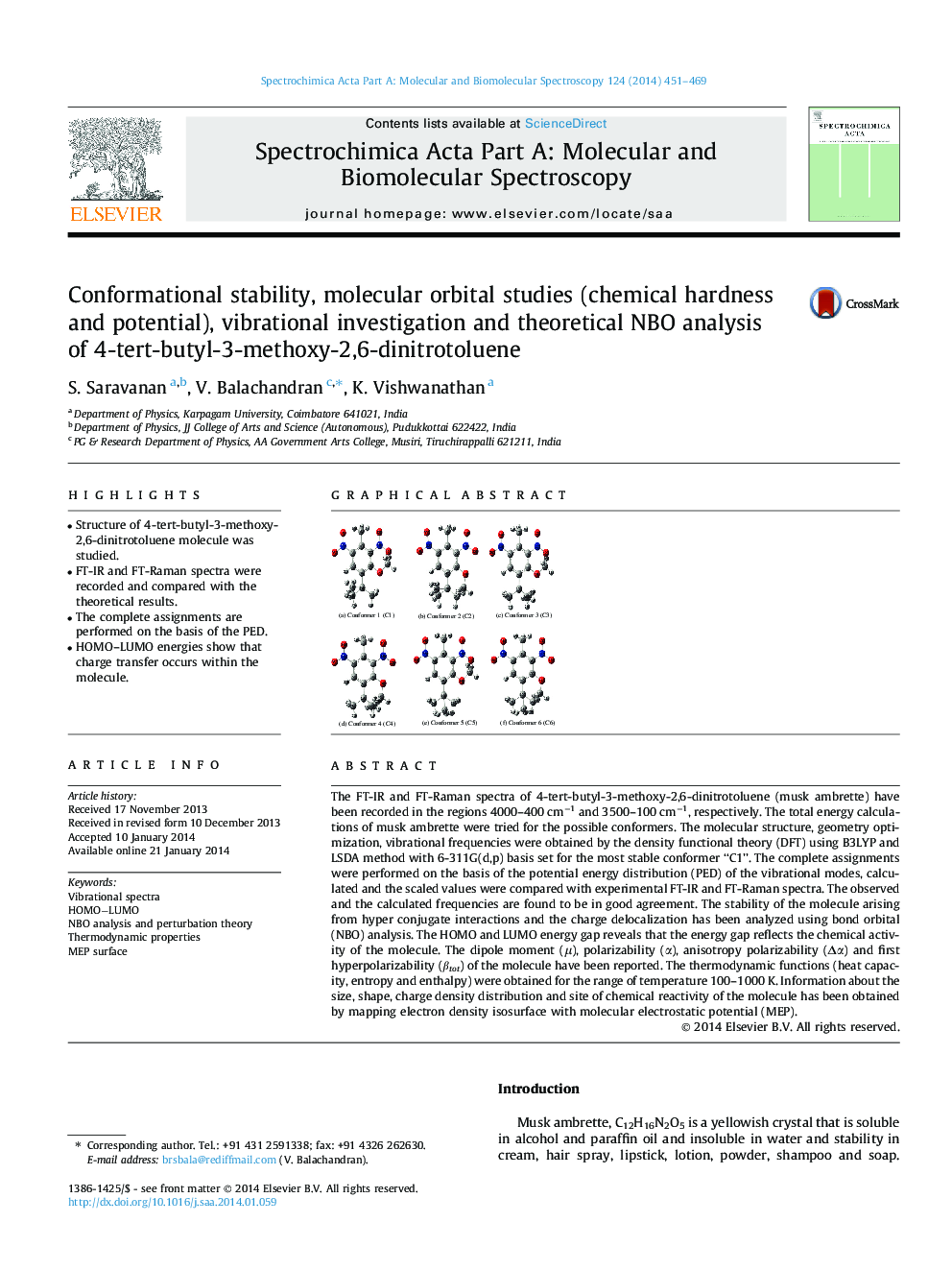| کد مقاله | کد نشریه | سال انتشار | مقاله انگلیسی | نسخه تمام متن |
|---|---|---|---|---|
| 1234314 | 1495244 | 2014 | 19 صفحه PDF | دانلود رایگان |

• Structure of 4-tert-butyl-3-methoxy-2,6-dinitrotoluene molecule was studied.
• FT-IR and FT-Raman spectra were recorded and compared with the theoretical results.
• The complete assignments are performed on the basis of the PED.
• HOMO–LUMO energies show that charge transfer occurs within the molecule.
The FT-IR and FT-Raman spectra of 4-tert-butyl-3-methoxy-2,6-dinitrotoluene (musk ambrette) have been recorded in the regions 4000–400 cm−1 and 3500–100 cm−1, respectively. The total energy calculations of musk ambrette were tried for the possible conformers. The molecular structure, geometry optimization, vibrational frequencies were obtained by the density functional theory (DFT) using B3LYP and LSDA method with 6-311G(d,p) basis set for the most stable conformer “C1”. The complete assignments were performed on the basis of the potential energy distribution (PED) of the vibrational modes, calculated and the scaled values were compared with experimental FT-IR and FT-Raman spectra. The observed and the calculated frequencies are found to be in good agreement. The stability of the molecule arising from hyper conjugate interactions and the charge delocalization has been analyzed using bond orbital (NBO) analysis. The HOMO and LUMO energy gap reveals that the energy gap reflects the chemical activity of the molecule. The dipole moment (μ), polarizability (α), anisotropy polarizability (Δα) and first hyperpolarizability (βtot) of the molecule have been reported. The thermodynamic functions (heat capacity, entropy and enthalpy) were obtained for the range of temperature 100–1000 K. Information about the size, shape, charge density distribution and site of chemical reactivity of the molecule has been obtained by mapping electron density isosurface with molecular electrostatic potential (MEP).
Figure optionsDownload as PowerPoint slide
Journal: Spectrochimica Acta Part A: Molecular and Biomolecular Spectroscopy - Volume 124, 24 April 2014, Pages 451–469